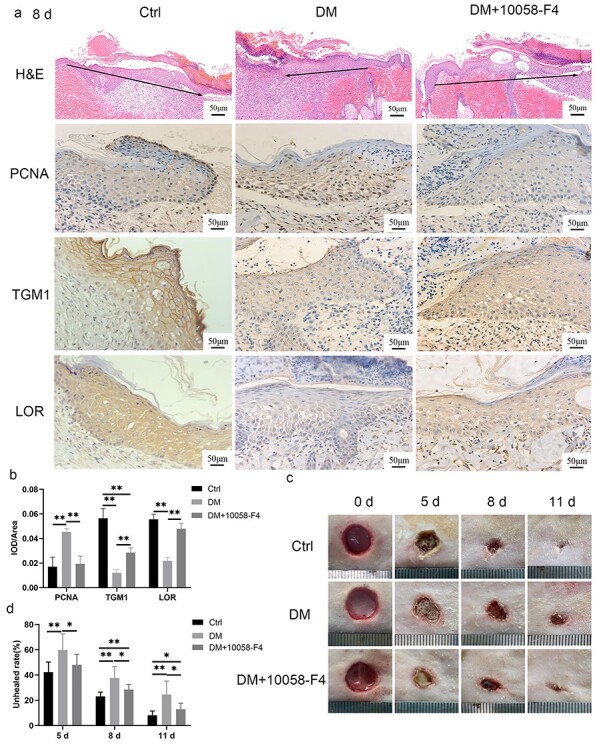Figure 5.

Inhibition of c-Myc promoted diabetic wound healing. (a, b) 10058-F4 (200 μL, 6 mg/mL) was administered subcutaneously at the edge of the wound for 8 consecutive days in the DM + 10058-F4 group. The results of H&E, immunohistochemical staining (a) and quantitative analysis (b) confirmed that 10058-F4 could abolish the slow migration, increased expression of PCNA, and decreased expressions of TGM1 and LOR in keratinocytes at the diabetic wound margin. The black arrow indicates the direction of epidermal migration. (c, d) Representative pictures of wound healing in rats (c) and quantitative statistics of the non-healing rate (d) indicated that inhibition of c-Myc (10058-F4) promoted the healing of diabetic wounds. Scale bar: 50 μm. *p < 0.05, **p < 0.01. Ctrl control, DM diabetes mellitus, H&E hematoxylin and eosin staining, IOD integrated optical density, LOR loricrin, PCNA proliferating cell nuclear antigen, TGM1 transglutaminase 1
